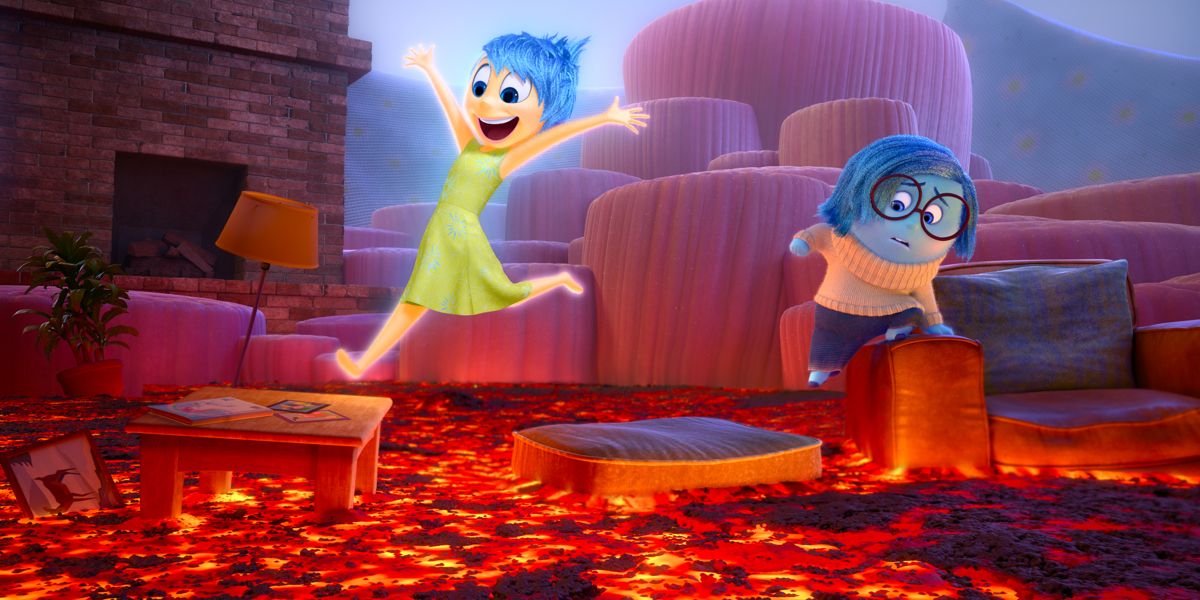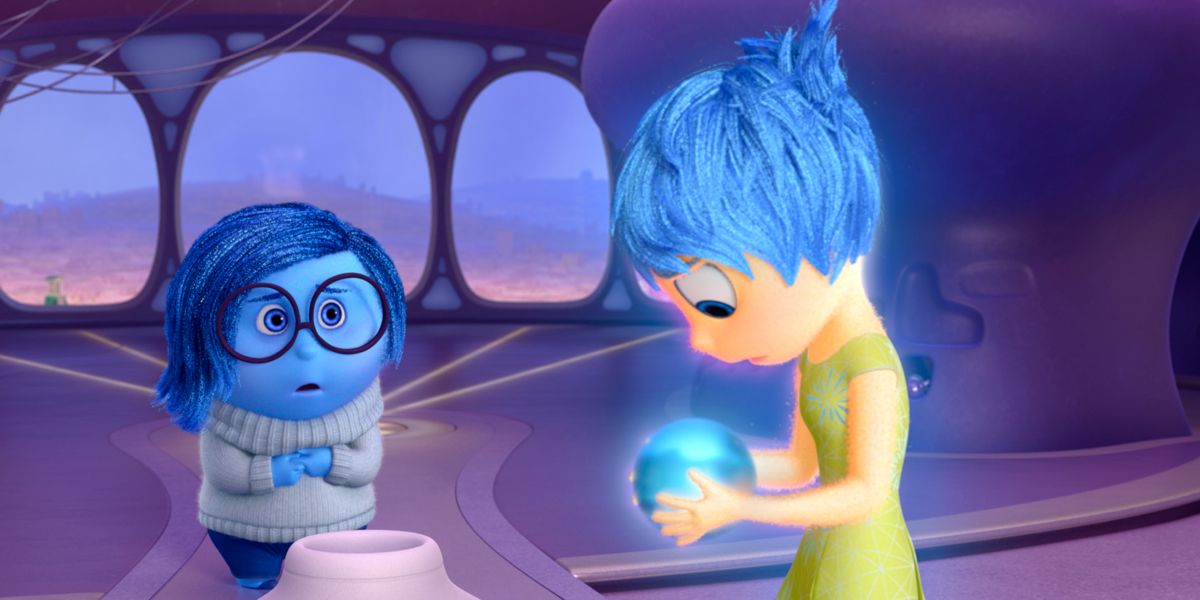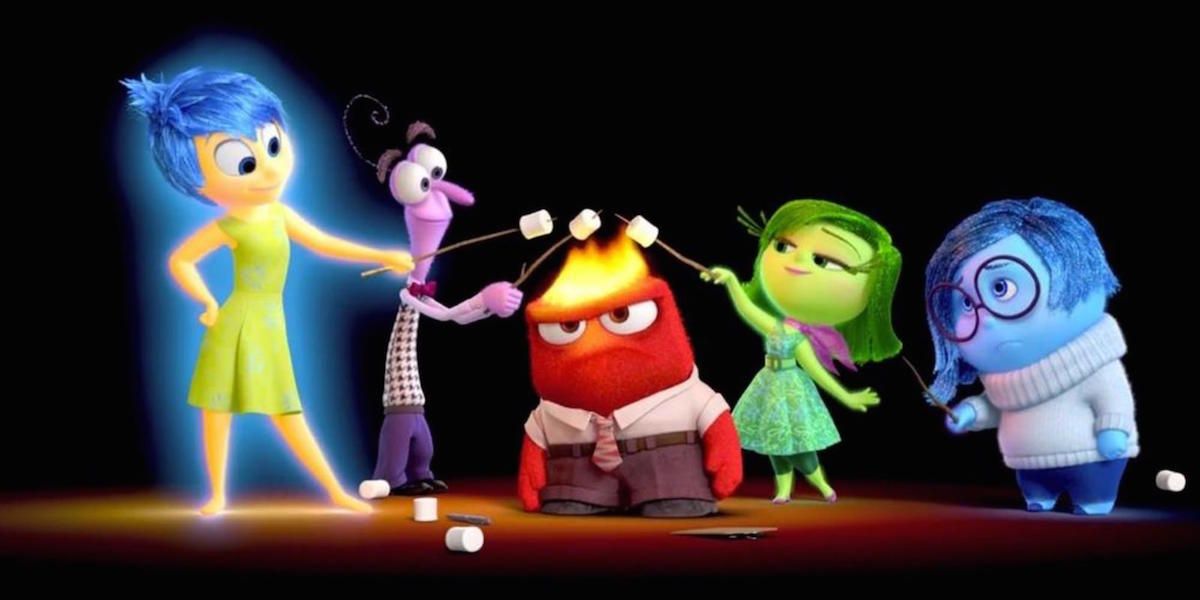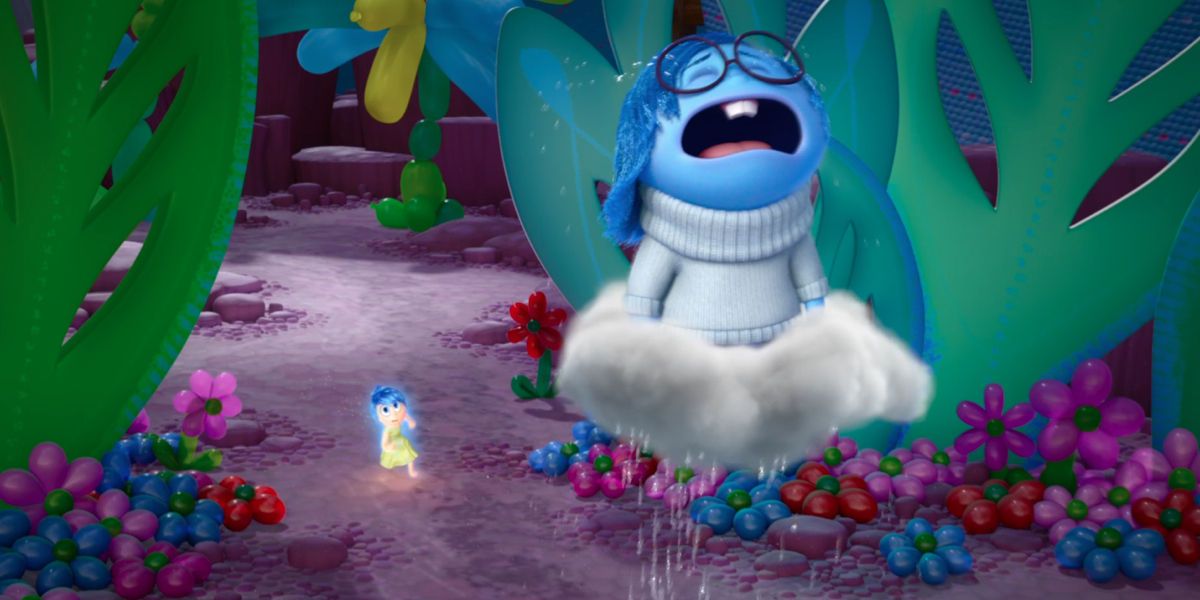Inside Out is a flat-out masterpiece and possibly the best Pixar movie since Up. The film follows an 11-year-old girl named Riley (voiced by Kaitlyn Dias) as her father’s job forces the family to uproot from her bucolic childhood home in Minnesota to the loud, busy streets of San Francisco. Leaving her younger years behind, Riley begins to experience emotions like sadness and fear more intensely – and that’s the twist: Inside Out takes place mostly inside Riley’s mind, a phantasmagorical place where her primary emotions – Joy (Amy Poehler), Sadness (Phyllis Smith), Fear (Bill Hader), Disgust (Mindy Kaling) and Anger (Lewis Black) – guide her reactions to the rapidly changing world around her.
Inside Out was conceived by director and co-writer Pete Docter, the longtime Pixar creative (he was the company’s 10th employee) whose previous directorial efforts have been Monsters Inc. and Up. But Inside Out may be his finest work yet. Inspired by his own personal parenting experiences with his daughter, Docter and the incredible Pixar team have fashioned a funny, unique and powerfully moving story about memory, loss of innocence and leaving the past behind.
Screen Rant sat down with Docter at the film’s recent press day in Los Angeles to discuss the ideas, concepts and production aspects behind this instant Pixar classic.
-
Bill Hader told me that the way you pitched the film to him was you showed him a picture of your daughter at a younger age, all happy and smiles, and then at 11, a little more sullen…
Yeah.
Let’s talk about that inspiration for the film.
Yeah, those pics, I have one of her being all goofy and she’s got a broken arm and she’s making a funny face. And then when she was 11, she was more kind of like, “Ugh…” I think that rang true for me as a kid. I definitely went through a big change. As a parent, it was really tough, because you don’t want your kid to be sad. Also, personally, I really value the sort of goofy, funny play on the ground with dolls and stuff. That’s gone away. That’s not going to be a part of my life anymore. The story is kind of told from a parent’s point of view, Joy being this surrogate parent. Trying to figure out what’s going on in our kids’ heads is what led to this movie.
One thread of the movie is the child learning to deal with her own emotions, and then the other one is about the parents trying to hold onto to those memories in some way, even though they’re moving in the past. Did it take a lot of work to find the right balance between those two points of view?
I think the big struggle for us was that the film originated in this idea of not wanting your kid to grow up and holding onto childhood and trying to preserve that, knowing full well that it’s impossible to do so. And as the film evolved, it really grew to be about embracing and understanding sadness. At first, those felt like they were at odds and they were fighting each other. We’d dramatized scenes like Joy and the memory dump where those old memories are disappearing. That was talking about the first (theme). And yet, there is other stuff where -- I don’t want to give too much away, but those scenes are about the second idea.
We were really kind of struggling with this. We pitched to Mindy Kaling to get her onboard. I pitched her the story. I finish and I turn around and she’s crying. And I was like, “Oh my gosh. What happened?” And she says, “I’m sorry. I just think it’s really beautiful that you guys are telling a story to kids that it’s difficult to grow up and it’s OK to be sad about it.” And we were like, “OK. Great. These two things can really come together and resonate. They’re not mutually exclusive.”
The thing about kids and emotions is that sometimes people want to medicate their kids right away, or they think sadness means they’re depressed. And that’s not really the case. It’s normal to learn how to deal with sadness.
That was a big thing that we learned. Depression is a clinical sickness. Sadness is a useful emotion and a normal, healthy emotion, and there’s a time when it’s really necessary. If you try to suppress it, you are going to do longer damage. Even though it seems painful and negative, it is a part of life.
In one way this movie is about mapping the human brain. You can certainly look at it that way. How did the science come into it and get integrated into this wonderful animated film?
We talked to a lot of different scientists, neurologists, psychologists, psychiatrists about how we understand even things like emotions. How many emotions are there? Well, there’s no consensus. Some people said three. Others said 27. Most were somewhere in the middle. And most of the answers to questions that we asked, the answer would be something along the line of, “Well, we’re not absolutely sure, but science thinks…” So that meant we got to make up a lot of stuff, which was kind of cool. And that’s why I got into this movie. I was attracted to the subject matter because we get to go places and make things up in different worlds.
But it did provide a lot of great information about the purpose of emotions, the reason they exist, the fact that they sort of have jobs, that they’re fundamental to us as people. As I look back at the notes, I see that scientists told us this. But it wasn’t really until I experienced it firsthand that I realized emotions are key to the most important things in our lives, which is the connection we experience as people. Those relationships are brought forward thanks to deep, wide, varied emotions. You know, people that you’ve had good times with, but also have been sad with and angry at. All these things are what create a deeper connection.
What emotions almost made the final cut but didn’t?
Let’s see. We actually boarded a version of the film with Pride, so Pride was in there. He had kind of a snooty upturned nose and sounded a little bit like Thurston Howell III from Gilligan’s Island. We had Hope. We cut her out. We had Schadenfreude and Ennui. But you can see the cast gets pretty big. If you open the doors to those guys, then suddenly there’s too many people to keep track of.
You could do it like The Avengers and have a new team for every film.
Yeah! [laughs]
What was the process like to visualize each emotion? How many variations did you go through?
That was tricky because we had no reference material to look at. We just had to kind of intuit. I guess a couple tricks that we used were language. There are things like what we say when we’re feeling sad -- we say, “I feel blue.” There’s little clues like that, or “explode in anger,” those kinds of turns of phrases.
But mostly we just relied on our amazing character designers. They would literally fill the walls with drawings, thousands of drawings, trying completely different ideas. And out of a bunch of them you’d be like, “There’s something about this that really works.” And then we’d start to refine from there and iterate. So it was fun. The characters were kind of the first thing to show up in the film. The world took way longer. It was even more difficult.
Was it difficult to map out the world inside Riley’s mind? Did it go through a lot of alterations?
We started based on our own feelings of consciousness, so we had kind of this firewall where stuff we were aware of was on the top, and then as you went down it became less and less clear and foggier until you finally got to a place of the subconscious or unconscious. But then as the story developed, we realized, “Well, that doesn’t really reflect…” One of the many difficulties on this film were that we have these two storylines, two completely different worlds, and yet we realized they work best when one affects the other.
So Riley is not even aware that Joy exists. And yet, her decisions are going to affect the entire universe down there. So we needed to represent that in a physical way that you would feel as an audience member. So that’s where the islands of personality came from, just trying to represent visually the personality that’s at stake.
Several of your colleagues have graduated to live action films. Is that something that interests you?
Well, I mean you never say never. I’m certainly intrigued by it. There’s challenges and things that would stretch different muscles. I did grow up loving animation and I still feel like there’s a lot to do there. There’s a lot of things that we’ve barely scratched the surface on. There’s things we can do in animation that you can’t quite get away with in live action, I think, and probably vice versa. But for now I’m sticking in animation. We’ll see what happens.
-
Inside Out is in theaters June 19, 2015.




